EMHS, CDRP and DIRT UAS
In 2012, several EMHS faculty began looking at how small unmanned aircraft systems could be applied to emergency and disaster management. At that time, the aircraft themselves were relatively simple, and many of our first aircraft were assembled by our team.
Over the next few years, EMHS expanded our role and capabilities. The first UAS classes at FSU were taught in 2015, and in 2017, FSU EMHS was included in the State Air Operations Standard Operating Guide. We operate a professional training program for UAS operators and program managers, and we have deployed UAS and remote sensing professionals to over 26 major disasters and full-scale exercises.
Our UAS activities are part of DIRT - the Disaster Incident Research Team - which was created in 2011 to bring researchers to active disasters and incidents.
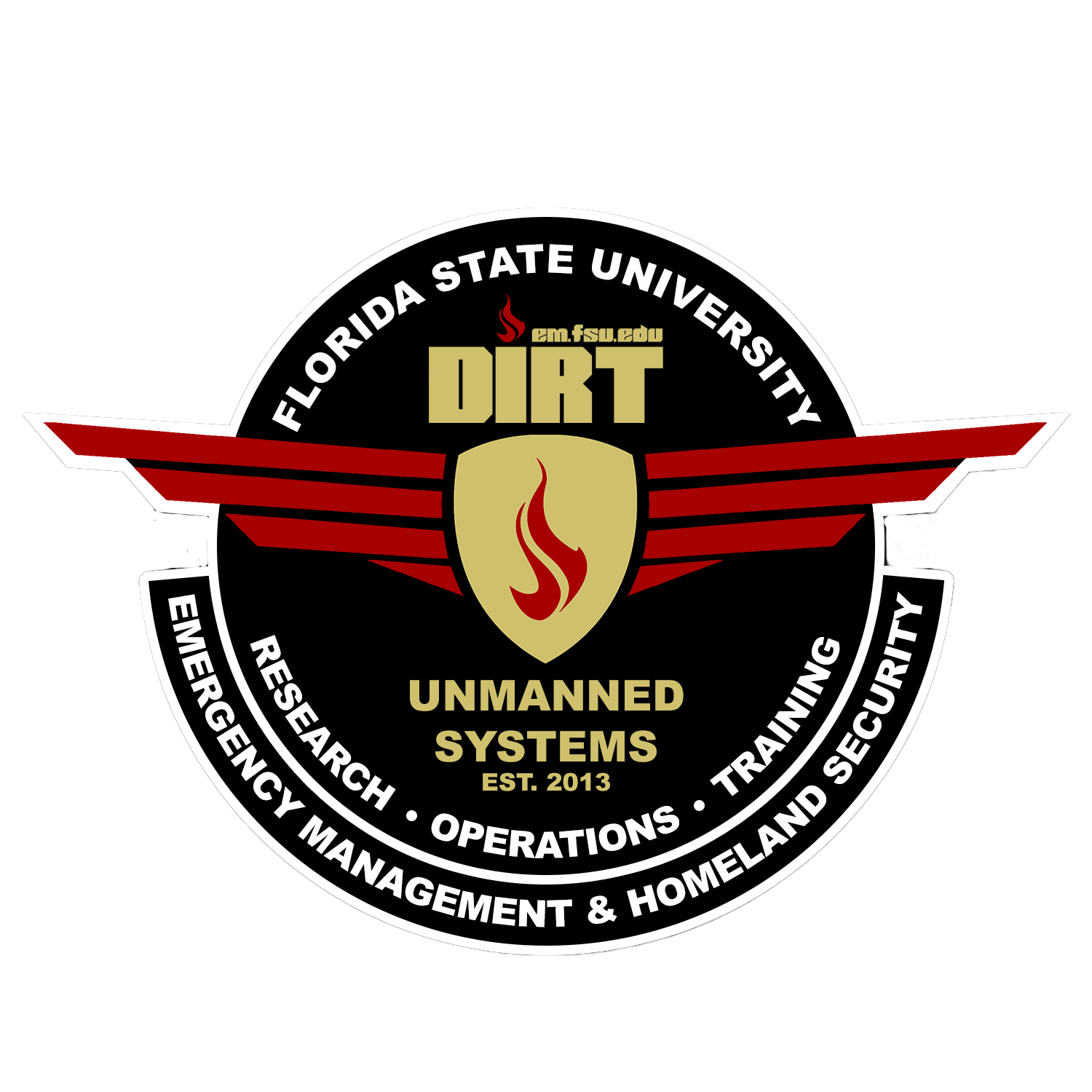
Research

EMHS conducts a variety of research and applied projects involving UAS, remote sensing, GIS, and data integration.
Operations
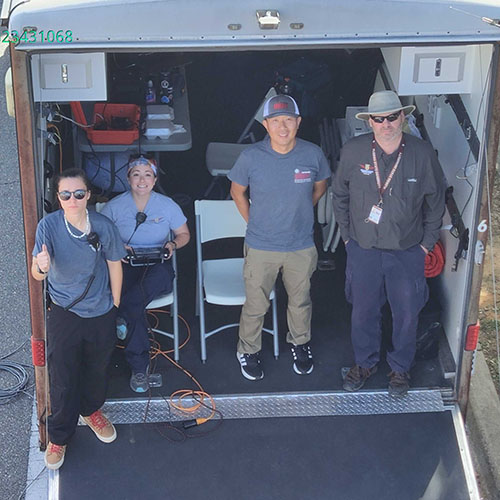
Our UAS team is a State of Florida deployable resource, and has responded to a variety of disasters and incidents.
Training
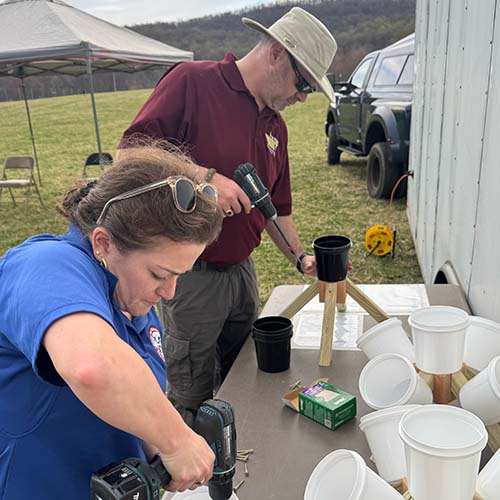
UAS training is a core competency of the EMHS UAS team, and we have trained dozens of local, state, and Federal agencies and operators.
UAS and Remote Sensing Team
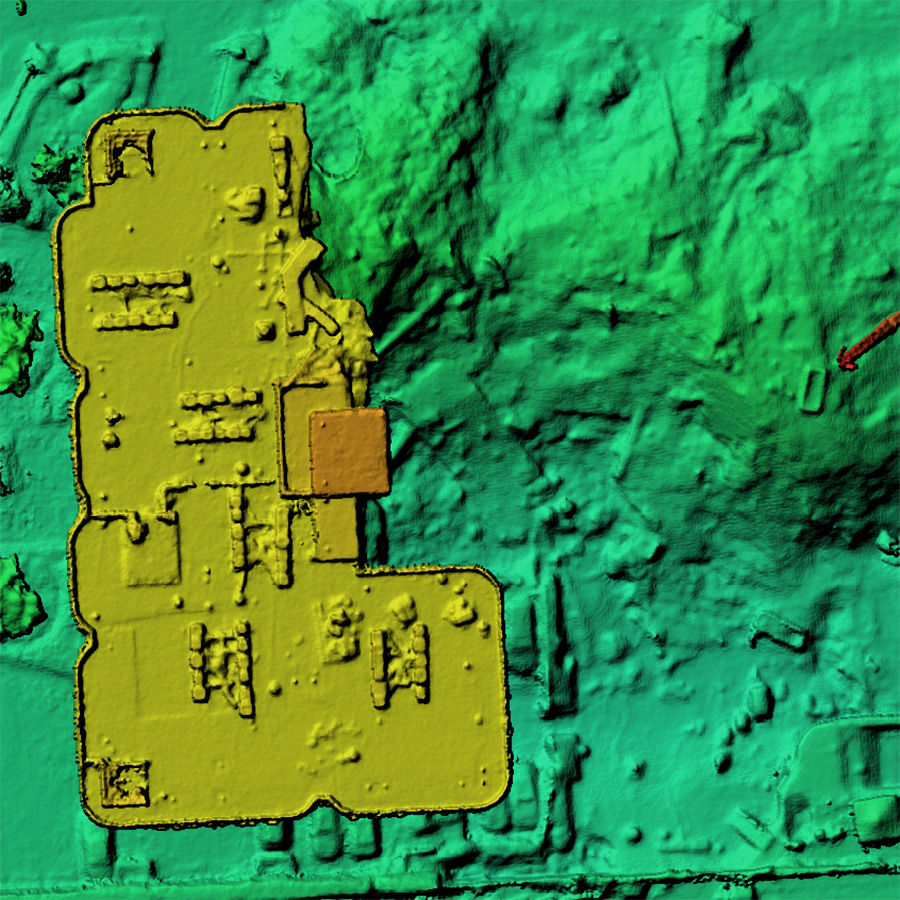
UAS and Remote Sensing Research
As pracademics, we strive to combine research and field applications in everything that we do. In the field of UAS, we have led the nation on the application and integration of UAS into emergency and disaster management - and that knowledge and experience is translated back into the FSU classroom.
FSU EMHS has had four National Science Foundation (NSF) funded projects since 2017, each focused on different aspects of data acquisition and application. These projects brought advances to how UAS data is utilized in disasters, and laid a foundation for ongoing research at other institutions.
Currently, FSU EMHS is part of the NSF AI Institute for Societal Decision Making. This project aims to apply innovative artificial intelligence systems into emergency managers, thus improving decision-making and outcomes.
Current Research Projects
AI Institute for Societal Decision Making (NSF 2229881) - The four-year project applies novel and existing artificial intelligence to a variety of societal issues. FSU EMHS is a partner, focused on enabling the intersection of AI research and applied emergency management and remote sensing applications. FSU principal investigators, faculty, staff, and graduate students provide critical real-world insight into disaster decision making, data applications, and situational awareness.
Applications of LiDAR in Search and Public Safety - LiDAR sensors deployed on small UAS are already used in surveying, mining, and construction. EMHS UAS deployed LiDAR after Hurricane Milton in support of seawall and beach assessments, demonstrating the basic capabilities of this complex sensor. This project examines the utility of these sensors in applications such as missing persons searches, criminal investigations, and other public safety contexts.
Disaster Remote Sensing Applications - Disaster remote sensing, geospatial intelligence, and disaster intelligence all exist to better inform decision makers. This project combines several disciplines to advance the collection, processing, analysis, and distribution of remote sensing products.
Notable Past Research Projects
Data Collection for Robot-Oriented Disaster Site Modeling at Champlain Towers South Collapse (National Science Foundation 2140573) - This project analyzed digital surface models and orthomosaic imagery over 19 days and created models for detecting survivable voids in a collapsed structure. Based on the EMHS UAS team's 25-day deployment to Surfside for the State of Florida, we utilized almost 2TB of imagery and products to build a layered model of the collapse.
Machine Learning for Dehazing Unmanned Aerial System Imagery from Volcanic Eruptions (National Science Foundation 1840878) - Disaster imagery is often collected in less-than-ideal environmental conditions. This project applied dehazing techniques to imagery collected during the Lower Puna Volcanic Event on the island of Hawaii in 2018. The methods developed during this work advanced the techniques used in future disaster scenarios.
Unmanned Aerial System Datasets from Hurricanes Harvey and Irma (National Science Foundation 1762139) - In 2017, after Hurricane Harvey, the Center for Robot Assisted Search and Rescue, part of the Texas A&M College of Engineering, collaborated with several partners including FSU EMHS to deploy the largest collection of UAS and operators to date. This deployment covered several Texas counties and spanned ten days. This project collected, organized, and annotated the largest dataset of UAS imagery to that point for the use of outside researchers.
UAS and Remote Sensing Operations
In the past decade, EMHS has responded to over 26 major disasters and incidents throughout Florida, as well as Texas, Hawaii, and Louisiana. This wealth of experience translates to everything we do - from developing new techniques on the application of LiDAR in public safety, to training new operators, to teaching academic classes at FSU.
Our team helped the State of Florida's Division of Emergency Management develop one of the most robust UAS integrations in the country. We became a part of the State's Air Operations Branch in 2016 and developed the first contingency airspace management plan in the nation that included small UAS as well as traditional manned response aircraft. In 2016, FSU's EMHS UAS team deployed as part of the Florida Urban Search and Rescue system (ESF-9) in response to Hurricane Matthew, laying the groundwork for how UAS integrates to a variety of response missions.
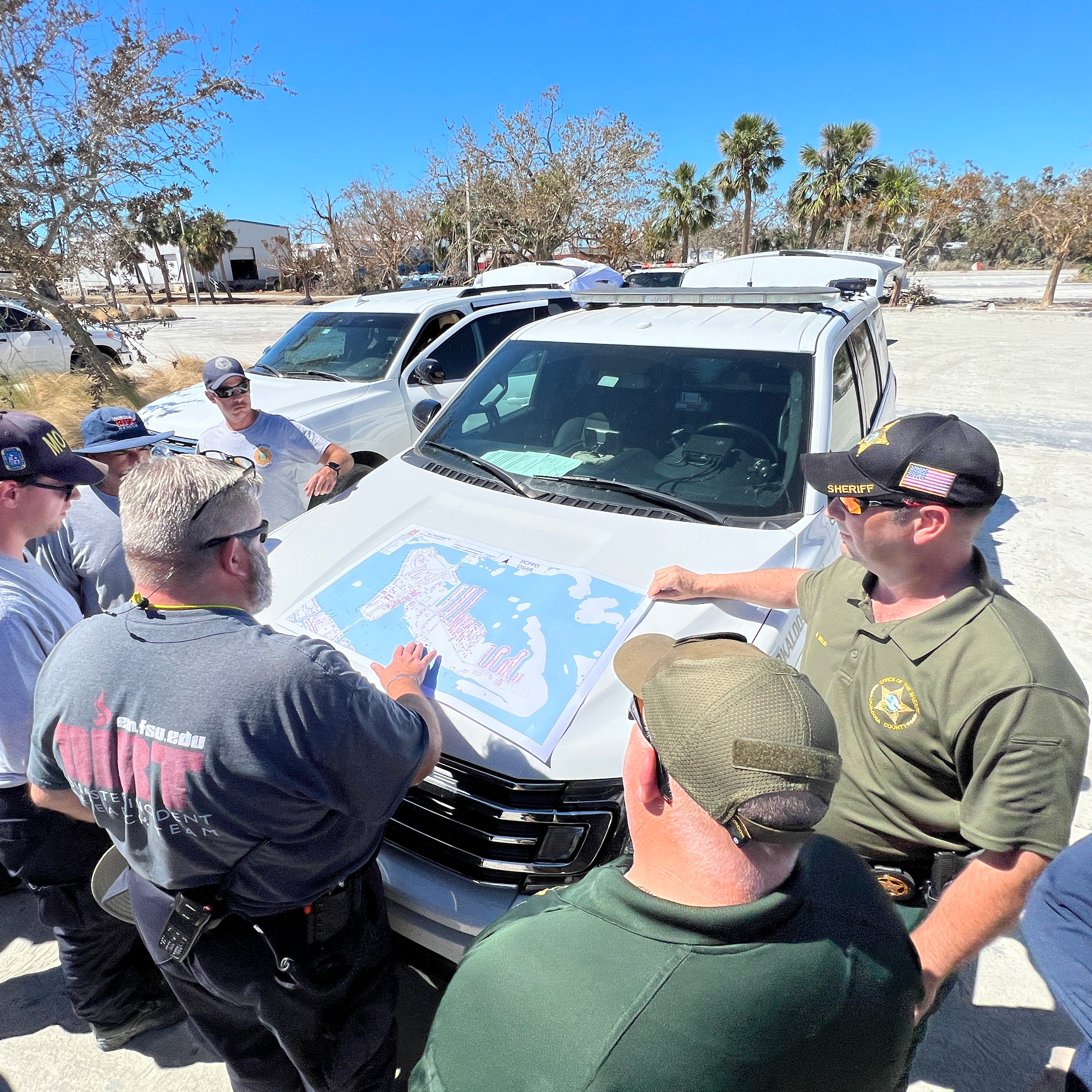
In 2021, the team deployed for 25 days to Surfside, Florida in response to the Champlain Towers South condominium collapse. Working with state and Federal US&R teams, FSU EMHS developed the standard for how remote sensing and UAS imagery integrates with US&R search management technology.
In addition to state activations, the EMHS UAS Team has supported dozens of local and regional events, including missing persons, supporting law enforcement on cold cases and criminal investigations, disaster mitigation projects, wildfires, and flooding. We understand how to integrate UAS and remote sensing into the needs of the incident commander. We have experience working with tactical teams, K9s, and manned aviation resources.
FSU EMHS has supported FSU Police, Emergency Management, and Athletics since 2018. Headed to a home football game? You'll see our UAS and crews there monitoring traffic and external stadium locations for the entire day. We respond to calls for service on medical emergencies, security issues, and missing persons - all conducted by our team of professionals and students.
Significant Activations and Deployments
Haiti Disaster Mitigation Project (2013, 2014), Belize Mitigation Project (2015), Hurriance Hermine (2016), Hurricane Matthew (2016), Hurriance Harvey (2017), Hurriance Irma (2017), Hurriance Michael (2018), Lower Puna Volcanic Eruption (2018), Hurricane Dorian (2019), Hurriance Sally (2020), Musset Bayou Waildfire (2020), Champlain Towers South Collapse (2021), Hurricane Ida (2021), Hurriance Ian (2022), Hurriance Idalia (2023), Hurricane Debby (2024), Hurriance Helene (2024), Hurriance Milton (2024).
Disaster and incident response is a team effort - and we are proud of what we can do to support other response and recovery experts. If your organization needs support in a current or future incident, let us know.
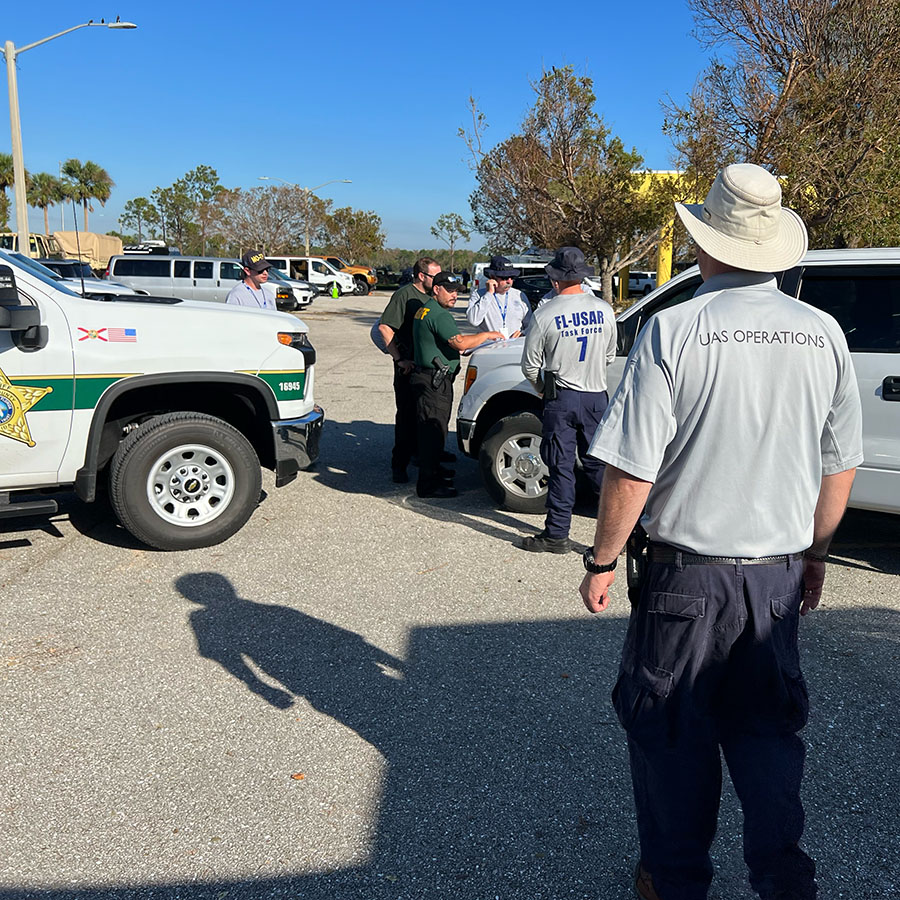
UAS and Remote Sensing Training
"Flying is the easy part." This is something that all our students hear, no matter what specific course or class we are teaching. We focus on this point as a way to remind students that the point of flying a UAS during a disaster or incident isn't to get pretty pictures... it is to enable better and faster decision making. This means that UAS pilots and crews need to be proficient in operating their systems, but also understand how to get data and information that decision makers in the command post or emergency operations center need.
Our training follows this philosophy. Yes, we teach basic and advanced flight maneuvers, mapping, reconnaissance, search, and night operations. We also teach that all of this is secondary to the information provided. In 2018, our team worked over twelve hours, in hazardous conditions, accumulating almost seven hours of flight... to ultimately deliver a post-it note to the command post. That was what was needed - critical information on lava flow speed and direction - not 50GB of photos and video (though we got that too!).
UAS Training Courses
If a student is starting from scratch, we recommend UAS Response Technician first, then UAS Response Specialist. Introduction to Public Safety UAS Operations is a good starting point as well, and overlaps with the first day of UAS Response Technician. Disaster Mapping can be taken at any time.
Available course information is listed below. Custom courses are available upon request.
Pricing listed is per student, in Tallahassee. Arrangements can be made to deliver the course at the client's location, but pricing will increase due to instructor travel costs.
Course List (Click to Expand)
UAS Response Technician - 38 Hours
UAS Response Technician
Duration: 38 Contact Hours
Delivery Method: Classroom and Hands-On Scenario Based Flights
Base Price: $1,200 per student (in Tallahassee)
The UAS Response Technician class is a 38-hour curriculum taught over five days. At the end of the course, students will complete a practical exam to earn the course certificate.
The program is designed to take existing UAS pilots and create safe, effective, professional operators prepared to work on incident scenes including major disasters. Coursework includes safety management systems, crew coordination, hands-on scenarios, and best practices for a variety of missions including search and rescue, law enforcement support, night operations, fire fighting, hazardous materials, recon, basic mapping, and damage assessment. Each course includes homework, teachback modules, and a course workbook.
The training curriculum and materials were developed by the professionals at the FSU Center for Disaster Risk Policy, the Texas A&M Humanitarian Robotics and Artificial Intelligence Laboratory (HRAIL), and the Center for Robot-Assisted Search and Rescue (CRASAR). This team has decades of applied experience in unmanned systems, robotics, computer engineering, emergency management, and disaster response.
Student learning objectives include:
- Recognize all Federal regulations regarding operation of UAS in the National Airspace System, including 14 CFR Part 107, 14 CFR Part 91, 14 CFR Part 61, and Section 333 and Section 336 of Public Law 112-95
- Recognize all state statutes and regulations regarding the operation of UAS in public safety.
- Identify the components and purpose of the Incident Command System as well as the Air Operations Branch at the incident and State levels.
- Determine personal minimums in regard to risk, including drug and alcohol effects, weather, and mission requirements, utilizing a PAVE checklist.
- Analyze issues with and risks to UAS operations created by conditions such as terrain, weather, obstructions, manned aviation, and airspace classification.
- Evaluate all conditions for a UAS flight and make an appropriate "go/no-go" decision.
- Distinguish the need for jurisdictional and organizational policies regarding the operation of unmanned systems for public safety and emergency management.
- Identify appropriate locations and conditions to conduct UAS operations based on launch/recovery needs, airspace and regulatory factors, obstructions, terrain, and weather.
- Plan a UAS sortie to accomplish a specific set of mission parameters given available resources.
- Perform safe and effective UAS operations as part of a designated UAS crew.
- Identify typical payloads of UAS and methods for integration into the UAS environment, including maximum takeoff weight and the impacts of payload on flight characteristics.
- Determine appropriate UAS airframes, payloads, and communication systems based on mission requirements and conditions such as weather, traffic density, and terrain.
- Determine an effective communications plan to include two-way communication as well as monitoring for situational awareness.
- Describe procedures for obtaining emergency authorization to fly in controlled airspace or other FAA-restricted locations.
- Formulate plans for multiple unmanned aircraft and crews to operate simultaneously over or near an incident scene.
- Apply techniques to effectively operate a UAS in the following public safety mission types: damage assessment, route clearance, search and rescue, firefighting, law enforcement support, and surveillance/reconnaissance.
- Apply techniques to effectively operate and apply UAS in nighttime conditions.
Find a UAS Response Technician Course
UAS Response Specialist - 40 Hours
UAS Response Specialist
Duration: 40 Contact Hours
Delivery Method: Classroom and Hands-On Scenario Based Flights
Base Price: $1,500 per student (in Tallahassee)
The UAS Response Specialist class is a 40-hour curriculum taught over five days and serves as the advanced course after UAS Response Technician. This course relies heavily on practical scenario-based training focused on complex scenarios. The five-day training culminates with a full-day exercise including search and rescue, mapping and modeling, airspace and domain awareness, and resource coordination.
Students will experience stressful situations with challenging time constraints, command expectations, degraded communications, and environmental challenges. Scenarios and lessons will include missing persons, hurricane/disaster response, major planned event support, data processing and management, and GIS integration. At the completion of the course, UAS operators will be prepared to support a variety of missions in dynamic environments.
Student learning objectives include:
- Recognize all Federal regulations regarding operation of UAS in the National Airspace System, with emphasis on airspace management and deconfliction in complex environments.
- Planning resource allocation and problem-solving the needs of incident command.
- Developing a communication and coordination plan to include manned, unmanned, and ground resources.
- Understanding the application and limitations of domain awareness tools, including ADS-B out and RemoteID.
- Planning for BVLOS applications.
- Developing and maintaining a UAS program at the organizational level.
- Integrating UAS data and products into Geographic Information Systems.
- Perform safe and effective UAS operations as part of a designated UAS crew.
Find a UAS Response Specialist Course
Introduction to Public Safety UAS Operations - 16 hours
Intro to Public Safety UAS Operations
Duration: 16 Contact Hours
Delivery Method: Classroom and Hands-On Scenario Based Flights
Base Price: $500 per student (in Tallahassee)
The Introduction to Public Safety UAS Operations class is a beginner-level class intended for new UAS operators expected to operate under 14 CFR Part 107 or Public Aircraft Certificates of Operation (COA). This two-day course reinforces the material required to pass the Part 107 Remote Pilot certificate and includes hands-on operation of small UAS in a public safety context.
Student learning objectives include:
- Recognize all Federal regulations regarding operation of UAS in the National Airspace System, including 14 CFR Part 107, 14 CFR Part 91, 14 CFR Part 61, and Section 333 and Section 336 of Public Law 112-95
- Recognize all state statutes and regulations regarding the operation of UAS in public safety.
- Identify the components and purpose of the Incident Command System as well as the Air Operations Branch at the incident and State levels.
- Determine personal minimums in regard to risk, including drug and alcohol effects, weather, and mission requirements, utilizing a PAVE checklist.
- Analyze issues with and risks to UAS operations created by conditions such as terrain, weather, obstructions, manned aviation, and airspace classification.
- Evaluate all conditions for a UAS flight and make an appropriate "go/no-go" decision.
- Distinguish the need for jurisdictional and organizational policies regarding the operation of unmanned systems for public safety and emergency management.
- Identify appropriate locations and conditions to conduct UAS operations based on launch/recovery needs, airspace and regulatory factors, obstructions, terrain, and weather.
- Plan a UAS sortie to accomplish a specific set of mission parameters given available resources.
- Perform safe and effective UAS operations as part of a designated UAS crew.
- Apply techniques to effectively operate a UAS in a variety of public safety mission types.
- Perform safe and effective UAS operations as part of a designated UAS crew.
Find an Intro Course
Disaster Mapping and Remote Sensing - 16 Hours
Disaster Mapping and Remote Sensing
Duration: 16 Contact Hours
Delivery Method: Classroom and Hands-On Scenario Based Flights
Base Price: $800 per student (in Tallahassee)
Decision makers in disasters all want maps. But how do we go from a drone in the field to a map in the EOC? This course covers the basic and advanced concepts that allow an operator to move beyond a simple request and deliver a product to decision makers that expands situational awareness without putting additional burdens on EOC staff.
The course covers planning, collection, analysis, and distribution of GIS-ready products, and includes significant emphasis on processing techniques. Students will create a collection plan, fly sorties, and process data in a variety of software suites. GIS experience is nice, but not required.
Student learning objectives include:
- Develop collection plans that meet incident objectives.
- Recognize all state statutes and regulations regarding the operation of UAS in mapping, survey, and public safety.
- Execute multiple flights to accomplish the collection plan.
- Understand automation and how this both increases and mitigates risk to the aircraft and the public.
- Practice domain awareness, including airspace regulation and air traffic deconfliction.
- Analyze issues with and risks to UAS operations created by conditions such as terrain, weather, obstructions, manned aviation, and airspace classification.
- Evaluate all conditions for a UAS flight and make an appropriate "go/no-go" decision.
- Understand the complexity of data management as applied to multi-day, multi-team operations.
- Process collected imagery utilizing industry standard technology.
- Generate GIS-ready products for use in digital and print mediums.
- Perform safe and effective UAS operations as part of a designated UAS crew.
Find a UAS Mapping Course
Training Calendar
EMHS schedules courses in advance at our Tallahassee training locations.









